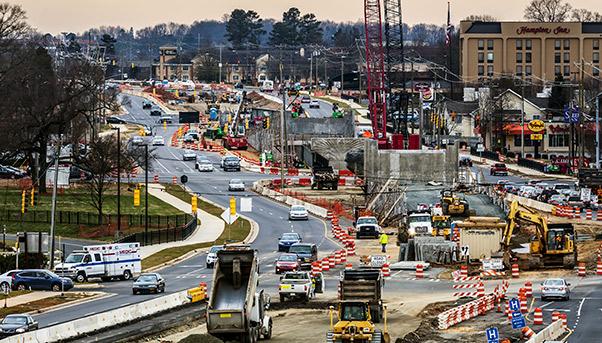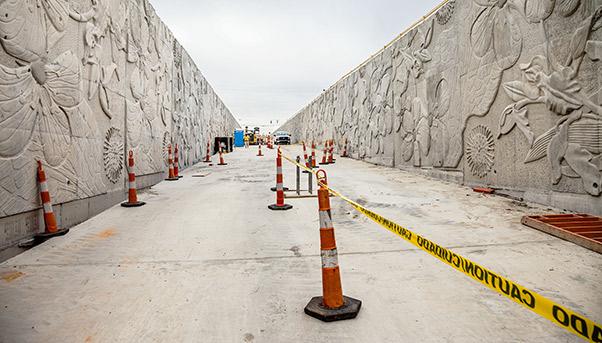
Charlotte has had so much success with its first light-rail transit line that this major city in the U.S. state of North Carolina is going for a repeat performance.
With state and federal backing, it is overseeing a $1.16 billion project to double the length of the LYNX Blue Line from Seventh Street near the Time Warner Cable Arena in the downtown area to a campus of the University of North Carolina on the outskirts.
Begun in 2013, construction is scheduled to end in 2017, with the extended line coming into revenue service in August of the same year.
City officials hope that these 14.9 kilometres of light rail will encourage the same kind of development that occurred along the existing line: new stores, new offices and new homes, attracting thousands of new workers and residents.
In addition to contributing to the local economy, the public transport system, operated by Charlotte Area Transit System (CATS), has helped reduce traffic and air pollution along the city’s roads and highways.
Charlotte’s Light Rail Project: its impact on the industrial area
The LYNX Blue Line, the first of its kind in North Carolina, runs for 15.4 kilometres from Seventh Street to the south end of the city at South Boulevard near Interstate 485. It has a fleet of 20 light-rail trains that serve 15 stations.
The most visible impact that it has had since it went into service in 2007 has been to encourage the transformation of the formerly industrial area through which it runs.
At the ground-breaking ceremony for the extended line in August 2013, the administrator of the Federal Transit Administration (FTA) at the time told The Charlotte Observer newspaper of the importance that public infrastructure including transportation had on the economy.
“Whenever you can connect big employers, it’s almost a sure-fire formula for success,” Peter Rogoff was quoted as saying. “Universities, hospitals, convention centers, sports arenas, especially if they develop policies around it to make it convenient, they succeed.”

The FTA, which provides financial and technical help to local public transport systems, is sponsoring the project.
Early signs of urban renewal appearing along the extended line have been encouraging, according to the newspaper. In a January 2016 article, it said plans to build more than 1,000 retail, office and residential units had already been announced. “The new rail line… is expected to trigger a development boom similar to the surge of new building that followed the Blue Line in South End,” it said, referring to an area served by the existing line.
One of those developers is Caroline States Regional Center, which is building 376 apartments on a site at North Tryon Street and the Interstate 85 connector road, the newspaper said in a subsequent article.
The project – known as the LYNX Blue Line Extension (BLE) – will include 11 stations, four of which will have a combined total of 3,100 parking spaces.
“The light rail… will really be a motivator for students to come to UNC-Charlotte because they will have the ease of mobility that does not exist right now,” student Rachel Ward told a video produced by the North Carolina Department of Transportation, which is also involved in the project.
Highlights of the work on the BLE include eight steel bridges, a concrete girder bridge and a tunnel. One of the builders is Lane Construction, the U.S. unit of Salini Impregilo, Italy’s leading infrastructure group. It is doing work on a section of the line to facilitate the laying of 7.7 kilometres of light rail. The work includes earthwork, retaining walls, box culverts, signals, conduits, asphalt and station foundations.
Similar work awaits Lane a few states away in Maryland, where it joined a consortium to win a $2 billion contract to design and build another light-rail transit system. Known as the Purple Line, it will connect to existing lines as well as buses and trains in a project designed to revitalize a number of communities. Work is to begin later this year.

